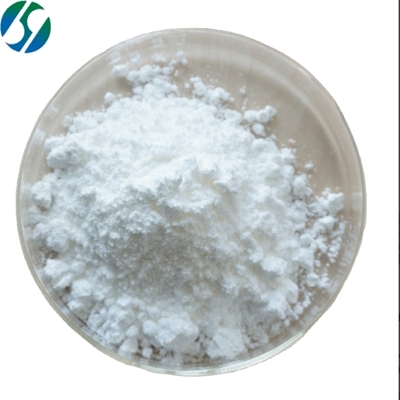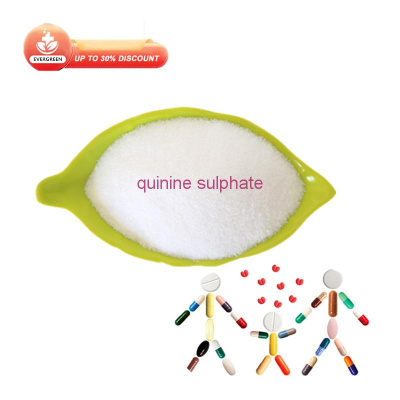Data interpretation: forget that Tyva and mylan large pharmaceutical companies also have large-scale imitative pharmaceutical business
-
Last Update: 2016-07-05
-
Source: Internet
-
Author: User
Search more information of high quality chemicals, good prices and reliable suppliers, visit
www.echemi.com
Source: the pool under the patent cliff of Ding Xiangyuan on July 5, 2016 is a vortex of undercurrent TIWA's forthcoming acquisition of Elgin's generic business may shake the heart of the whirlpool, but now it is the large pharmaceutical companies that dominate the generic business Of the top 10 companies competing in the generic market, only four are pure "generic" companies They are TIWA Pharmaceutical Co., Ltd., freseniuskabi Co., Ltd., mylan company and sun Pharmaceutical Co., Ltd The super alliance includes six original research drug companies, for which the non patent drugs account for just 31-68% of their drug sales They are Pfizer, AstraZeneca, Sanofi, Novartis, Novo Nordisk and Otsuka Pharmaceutical Co., Ltd In 2011, Lipitor, once the world's best-selling drug Pfizer, lost most of its market monopoly, and it was from that year at least that large pharmaceutical companies have been collecting more and more generic drugs The sales revenue of large original pharmaceutical companies from non patent drugs is almost twice that of large generic pharmaceutical companies According to scrip's research report, 19 large pharmaceutical enterprises (excluding TIWA, but including Novartis) generated sales revenue of about 95 billion US dollars in 2015, accounting for 26% of their total drug sales Table 1 Large pharmaceutical companies sell more generic drugs (2015 figures) than large generic companies Classified pharmaceutical sales (US $1 billion) sales of generic drugs (US $1 billion)% sales of generic drugs accounted for the total sales proportion of large pharmaceutical companies * 358.494.5 26.3% sales of generic drugs * * 77.755.6 71.5%* Pfizer, Sanofi, AstraZeneca, Otsuka pharmaceutical, Novo Nordisk, Novartis, mosadong, GlaxoSmithKline, Bayer, Merck xuelano, Amgen, Bristol Myers Squibb, Lilly, Johnson & Johnson, the first three pharmaceutical companies, bringer Ingelheim, Baijian, Gilead science, Takeda **TIWA, mylan, fisenyuskabi, eljian, Abbott Laboratories, Japan Co., Ltd Hiroto, Aspen, Dr Reddy laboratories, Lupin, Apotex, sipura, stard, malincro, hikma pharmaceuticals, Krka, brigor, glenmark pharmaceuticals, alvogen pharmaceuticals, Yibang pharmaceuticals, stridesarcollab, walkhart SAIJIN pharmaceutical, ani pharmaceutical, alabindu, Par Pharmaceutical, Nichi IKO, Welland pharmaceutical, kadila, Intas pharmaceutical, amneal pharmaceutical, lannett By contrast, the top 30 generic companies (not considered large pharmaceutical companies) have sales of about $55.6 billion Most pharmaceutical companies don't think their generic drugs are generic, of course, according to strict regulatory definitions they are not They were the original research drugs, which were the heavyweight brand drugs earlier, but now they have to compete with cost plus products in the market TIWA is a big company, most famous for its generic sales, but it is not the top non patent drug sales company Its generic business accounts for only 49%, or US $9.5 billion, of the total sales revenue of the Israeli company Another US $4 billion of the non patent sales revenue comes from its multiple sclerosis drug, kelatirel acetate, so its total non patent sales revenue is about US $13.5 billion (it seems reasonable to include kepasone in generic drugs, but the company has allocated the revenue of kepasone to the professional Drugs Department The main element of the drug's exclusivity has expired, with sales exceeding each other in the past two years) In addition, aierjian's $6.5 billion generics business only allowed TIWA to rank second on the list At that time, its total sales revenue of non patent drugs was about $19.5 billion, but about $2 billion was related to acquisitions and other product portfolio divestitures After removing this part of sales revenue, its sales volume of non patent drugs dropped to 175.5% US $billion (about 70% of its total drug sales) For Tyva, the difficulty in becoming the top seller of generic drugs is that despite its rapid external acquisition of generic drugs, large pharmaceutical companies have been reaping a lot from generic drugs when their previous blockbuster products lost market monopoly Pfizer is the No.1 in the field of generic drug sales It now has an established product division with sales of $21 billion (47% of Pfizer's total sales) The division consists of several parts, first Lipitor (still a blockbuster drug with annual sales of about $1.9 billion) and another $9 billion "original patent expired" product Second is the product that is about to lose its exclusive right, with annual sales of 5.3 billion US dollars The third is aseptic injection products with annual sales of about US $4 billion, which are largely from the acquisition of Hercules in 2015 Other large pharmaceutical companies have similar generic products, as well as flexible ways to describe them in financial reports Novartis has a Sanders generic unit with annual sales of US $9.2 billion, but sales of its "old brand drugs" have also reached US $6 billion, resulting in more than US $15 billion in sales of its generic drugs Sanofi has a "generic" department, with sales of about 1.9 billion euros in 2015 The company also has a "old brand" department, with an annual sales of 11.6 billion euros, which is six times larger than the generic business In this way, the total sales of non patent drugs reached 14.98 billion dollars at the exchange rate in 2015 The annual sales of original patented products of AstraZeneca are US $8.9 billion, including the company's various cardiovascular and respiratory products with declining sales MSD ranked 12th in the list of generic drug sales, with $3.9 billion in sales of "diversified brand" drugs, including products such as montelukast sodium and mometasone furoate GlaxoSmithKline ranked 13th on the list In April 2014, GlaxoSmithKline set up an "old brand products" department and planned to spin it off to form a separate company, but the company changed its original intention before the end of the year GlaxoSmithKline's old brand products now have annual sales of more than $4 billion The annual sales volume of Bristol Myers Squibb's "mature" products is 2.6 billion US dollars Not all large pharmaceutical companies have a separate division for their generic products, but generic drugs are a growing part of their business, at least in terms of scale of sales Lilly is still recovering from the decline in sales of duloxetine, raloxifene and olanzapine Merkel's Libby and abital, Amgen's afayibotine and fegerstin are facing the competition of bio similar drugs Meanwhile, alipiprazole, with annual sales of US $5.5 billion (68% of the company's total sales) in Otsuka, Japan, is also facing competition from generic drugs Love original patent expired products; prompt growth computing pharmaceutical companies are often proud of the innovation and potential of their products, and may be surprisingly honest about the scale of their non patent product portfolio However, for companies that often cause business renewal and reorganization due to patent expiration, cramming old products into the warehouse does not mean that newer, shiny patent protection products can dominate the windows and showrooms of pharmacies The annual report may focus on the "growth product portfolio" optimistically, and supplement or briefly explain the products with expired original research patents, old brands or mature products, generally explaining that the sales of these products are relatively low due to the competition of some products after the loss of exclusive rights When patents expire, it makes sense to put these products in the basket of generic drugs However, accountants who prepare annual reports sometimes like to indulge in financial gimmicks that can be misleading For example, in Pfizer's 2015 annual report, the "old brand products" segment included drugs with expired patents, such as the non steroidal anti-inflammatory drug celecoxib and the antibiotic drug linezolid In 2015, the two drugs generated $1.7 billion in sales for Pfizer's established product division According to Pfizer's 2015 financial statements, the sales volume of the two products in 2013 was US $3.4 billion, and the revenue was also classified into the old product department However, in Pfizer's 2013 annual report, celecoxib's revenue was allocated to Pfizer primary care and linezolid's revenue was allocated to professional care, neither of which was part of the established product segment Pfizer's approach creates the impression that sales of its non patent portfolio have shrunk, while increasing the apparent growth rate of the growth segment A similar situation exists in MSD's annual report According to the company's financial year 2014 report, its "diversified brand" business rapidly shrank from less than $9 billion in 2012 to less than $5 billion in 2014 The peak sales revenue of montelukast sodium in 2012 was included in the "diversified brand" business, and the peak sales revenue of mometasone furoate monohydrate in 2013 was included in the "diversified brand" business From 2012 to 2014, this post distribution increased the non diversified growth part of MSD by about $3 billion on the surface There is no sin in doing so, and pharmaceutical companies can distribute their products to any sector of their choice However, readers should keep their eyes clean and be cautious when browsing the annual report The operating profit of large generic pharmaceutical companies such as malincro Pharmaceutical Co., Ltd and Japanese Wisteria Co., Ltd is about 40% of the sales Tyva's generic business has consistently reported nearly 50% of operating profit Pfizer's non patent medicine division reported operating profit of about 60%, reflecting the existence of newly lost patent protection products in the "old brand products" basket, as well as the reputation and premium related to the original research brand products Table 2 Profit of generic drugs: operating profit from 2013 to 2015 * operating profit margin of the company: Pfizer 59-64%, TIWA 52-54%, malincro 34-51%, Japan yuanteng 27-42%, hikma 31-36%, Aspen 33-35%, atvez 32-34%, Lupin 27-34%, alabingo 28%, Dr redy 25-26%, cadilla 22%, fresnyuskabi 20-21% Krka 20% Abbott Laboratories 18-20% Intas pharmaceutical 19% Yibang pharmaceutical 10-16% steddes akerberg 16% Sandoz 16-18% STADA 9-15% Nichi IKO 7-9% * "pure" generic pharmaceutical companies or companies reporting operating profits of non patent drugs For companies that set up international drug control businesses in India and other developing markets, the operating profit is a little less, but far from suffocating Hikma Pharma, Aspen Pharma, Lupin, arabindu Pharma, Dr Reddy laboratories and cadilla, each of which has reported a 20-35% operating profit on generic drugs since 2013 There is a false dichotomy between generic drugs and "original research" drug manufacturers To some extent, this may be counterintuitive, generic
This article is an English version of an article which is originally in the Chinese language on echemi.com and is provided for information purposes only.
This website makes no representation or warranty of any kind, either expressed or implied, as to the accuracy, completeness ownership or reliability of
the article or any translations thereof. If you have any concerns or complaints relating to the article, please send an email, providing a detailed
description of the concern or complaint, to
service@echemi.com. A staff member will contact you within 5 working days. Once verified, infringing content
will be removed immediately.







